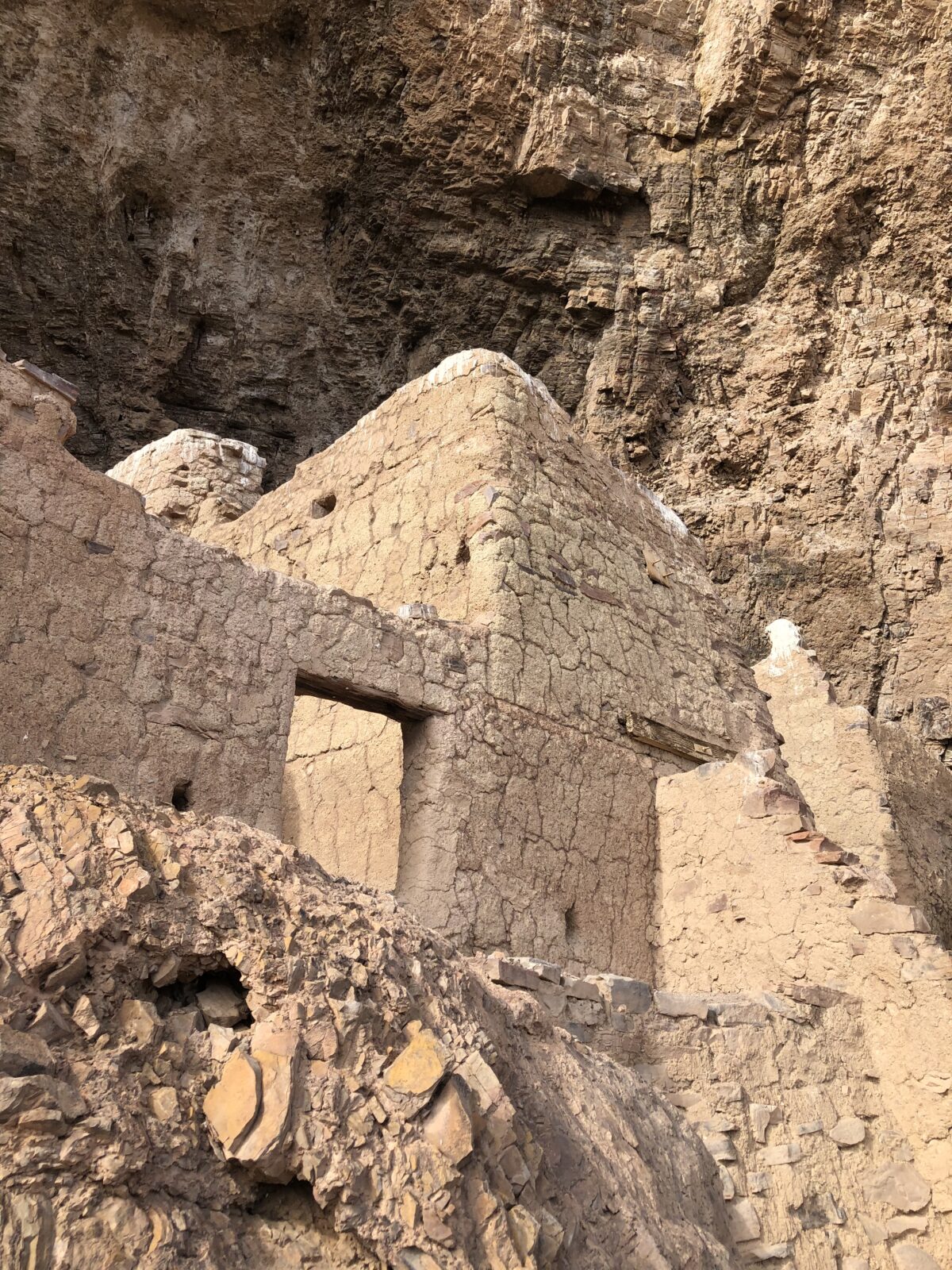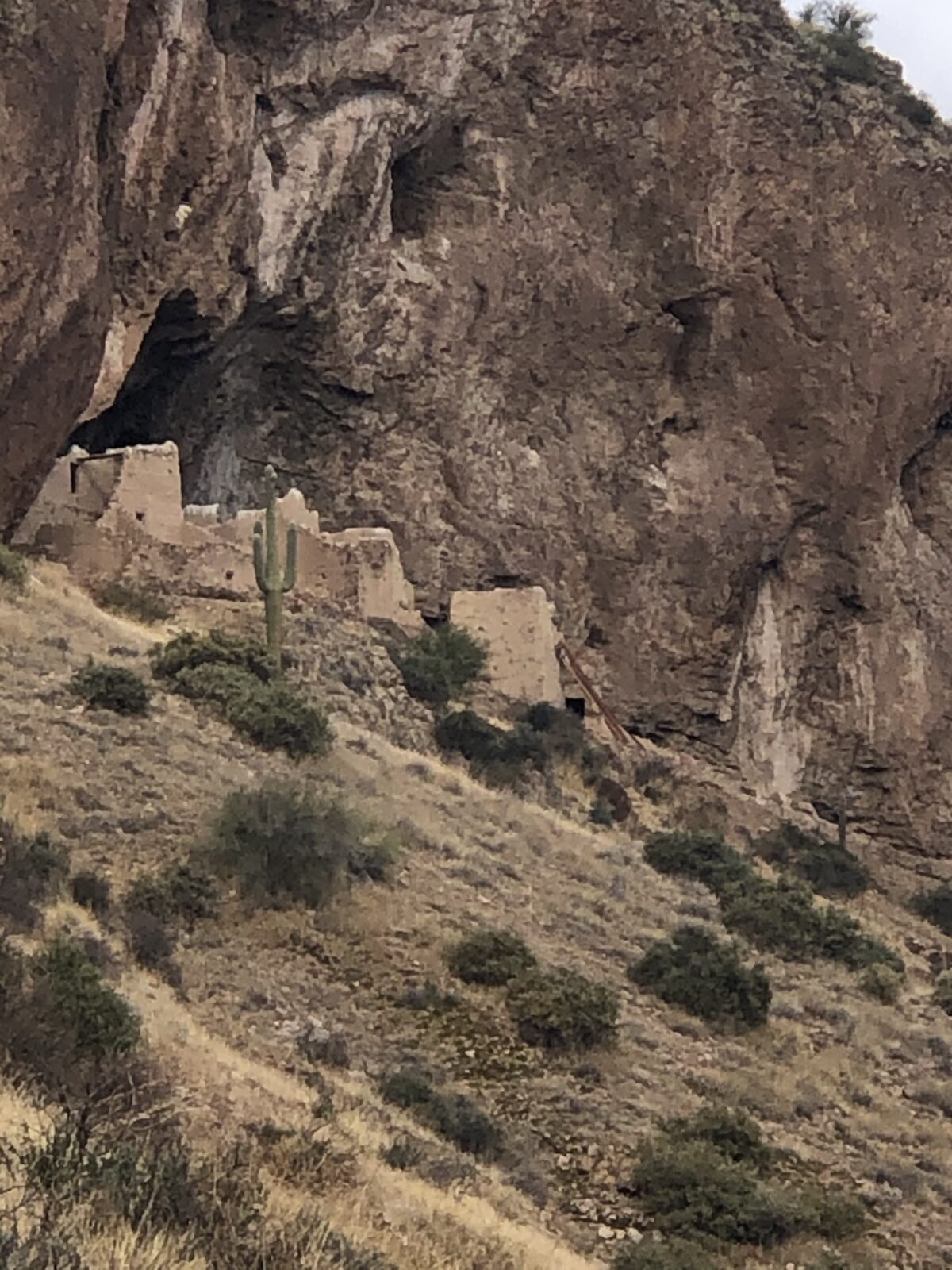Tonto National Monument – Part II
We wrote Tonto National Monument – Part I a few months back, but we could only talk about the lower cliff dwellings. As we mentioned then, there are upper cliff dwellings at this monument in Arizona but these are not all that easy to get to. But after three attempts, we finally made it!

We were able to sign up for a ranger-led tour (that’s the only way you can go) and it was well worth the wait. They limit group sizes; ours had only 7 people plus the tour leader and a ranger. It is a 1.5 mile hike up to the dwellings with a 600 foot elevation gain, mainly in the form of long switchbacks near the top.

The trail was built by the CCC in 1940’s. Before that, the only way to access the upper cliff dwellings was a scramble through the desert, up and over the ridge. That did serve to protect the ruins. As a result the upper cliff dwellings are better preserved and yielded more artifacts.
It was a pretty easy hike, with lots of stops where the guide shared all sorts of information. Not only did he talk about the archaeological features, he pointed out where they farmed and what types of plants they used for medicines and foods. They extracted shampoo and soap from the sotol plants; oils from the jojoba plant, fruit from the cactus; and cooked agaves and ate them like you would an artichoke heart.
We were amazed to begin our hike walking through a gorgeous riparian area with a year round running creek, lined with Arizona sycamore, hackberry and Arizona black walnut trees. The ancient spring supported their plantings of corn, beans and squash, supplemented with local game.

About half way into the hike, you finally see the upper cliff dwelling. It is huge. They believe this 40 room, 2 story structure housed as many as 80-100 people between 1300 and 1450 CE. Coupled with the lower cliff dwelling and small outlying dwellings atop the hills across the valley, this was a thriving community in its time.

We were able to walk into the rooms and see still intact doors and roofs. There was also a great view of Lake Roosevelt.

You can go back into the large common area at the back of the cave. One thing we found surprising was the small water reservoir there, still wet enough for a small plant to survive. They think it was possibly filled from a natural spring or perhaps by water carried up from the creek.

We appreciated hearing more about how this area was an intersection of cultures. On the one hand were the Salado living in cliff dwellings, and on the other hand there were other cultures that lived along the river. But they say there was no sign of conflict; the cultures lived in harmony and there was evidence of substantial trade.
We have to say that the volunteer who led the hike was key to the experience. Will was extremely knowledgable, not only about this structure but about Native Americans cultures in general. He told us about the history of the National Monument, especially fun stories of the early days when men building the Roosevelt Dam who lived in nearby “man camps” would come up to the dwellings to find artifacts. Then later how how railroad actually helped preserve what was there by taking over and running tours from Globe. He also had a love for the surrounding desert plants and animals, and shared his understanding.

Will is a great example of a VIP – recognized on the park’s Facebook page for his 10 years of service. This is the 50th anniversary of the VIP (Volunteers in Parks) program, passed by Congress in July of 1970 to allow volunteers to help out in parks and provide interpretive services, bringing their knowledge and passion to help make the history, geology, culture come alive.
There are over 279,000 volunteers, who have donated over 6.5 million hours of their time in the past year. (If you are interested in this program and the many volunteer opportunities at national park units around the country, see volunteer.gov) We imagine that anyone who has visited any national park unit has come across a wonderful volunteer. Please be sure to thank them. We certainly do. Thanks Will!
Need Help Planning Your Visits?
If you would like to explore this or other National Park Units, but need a bit help in the planning, please give us a call at (480) 609-3978. We are happy to offer customized trip planning.
#FindYourPark
#SeeAmericaFirst

